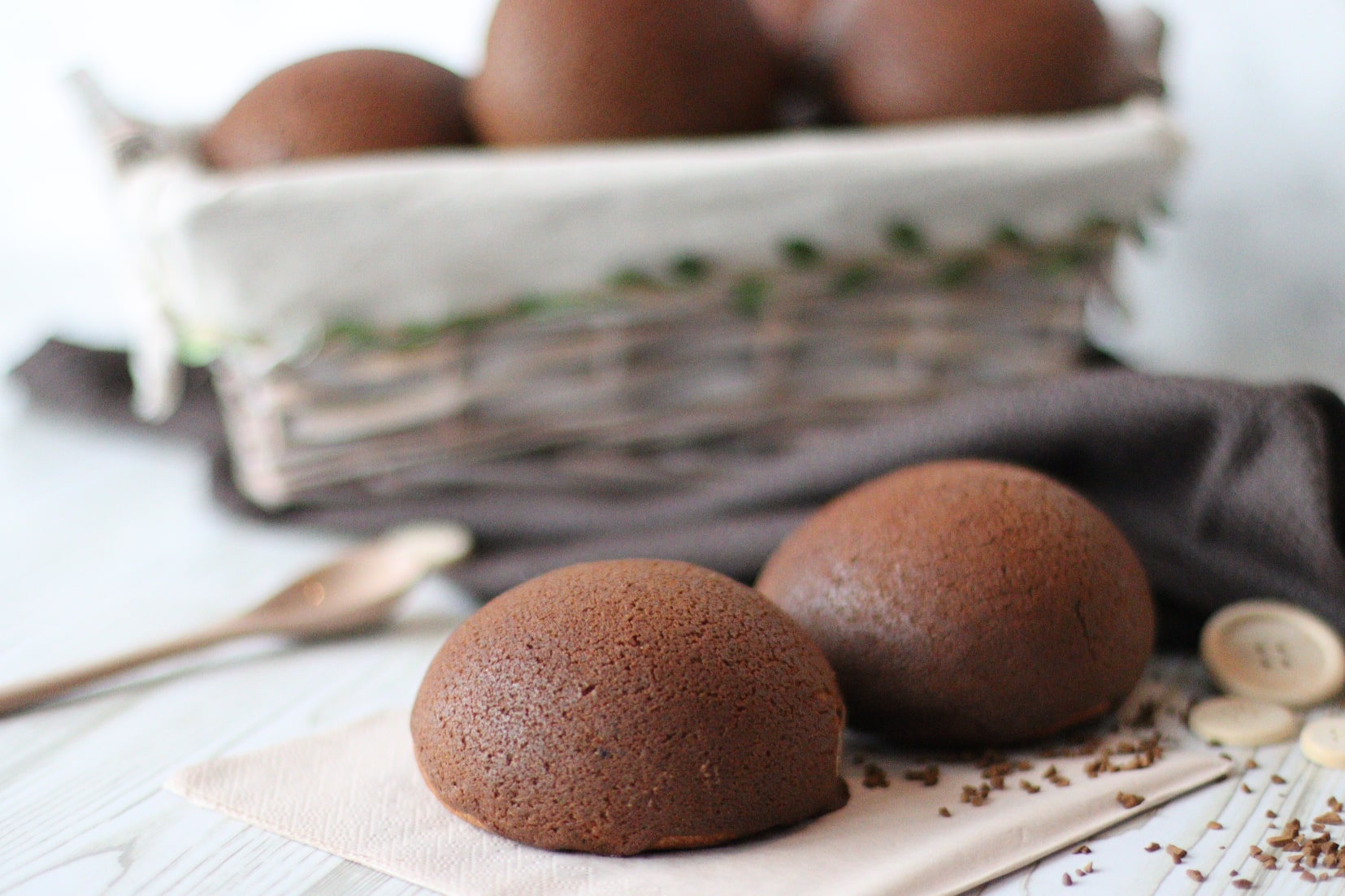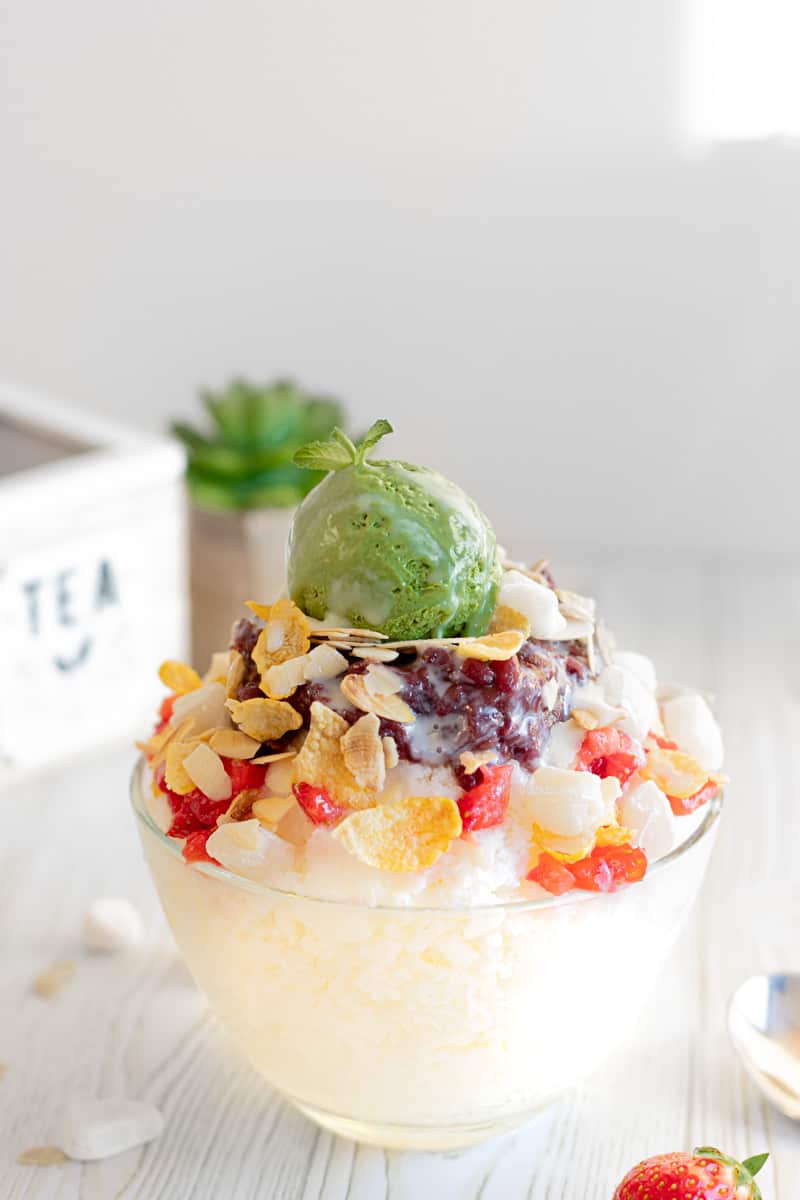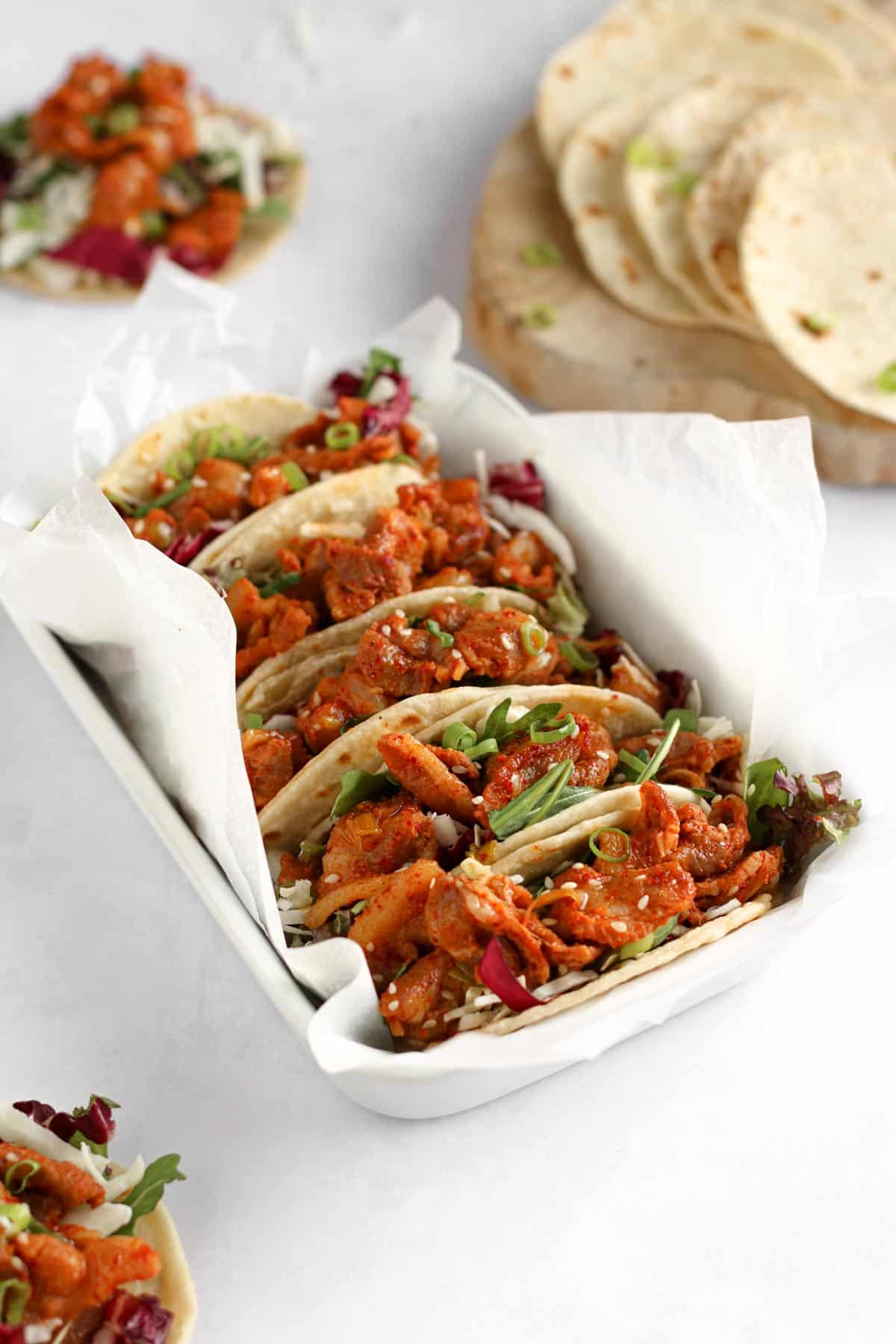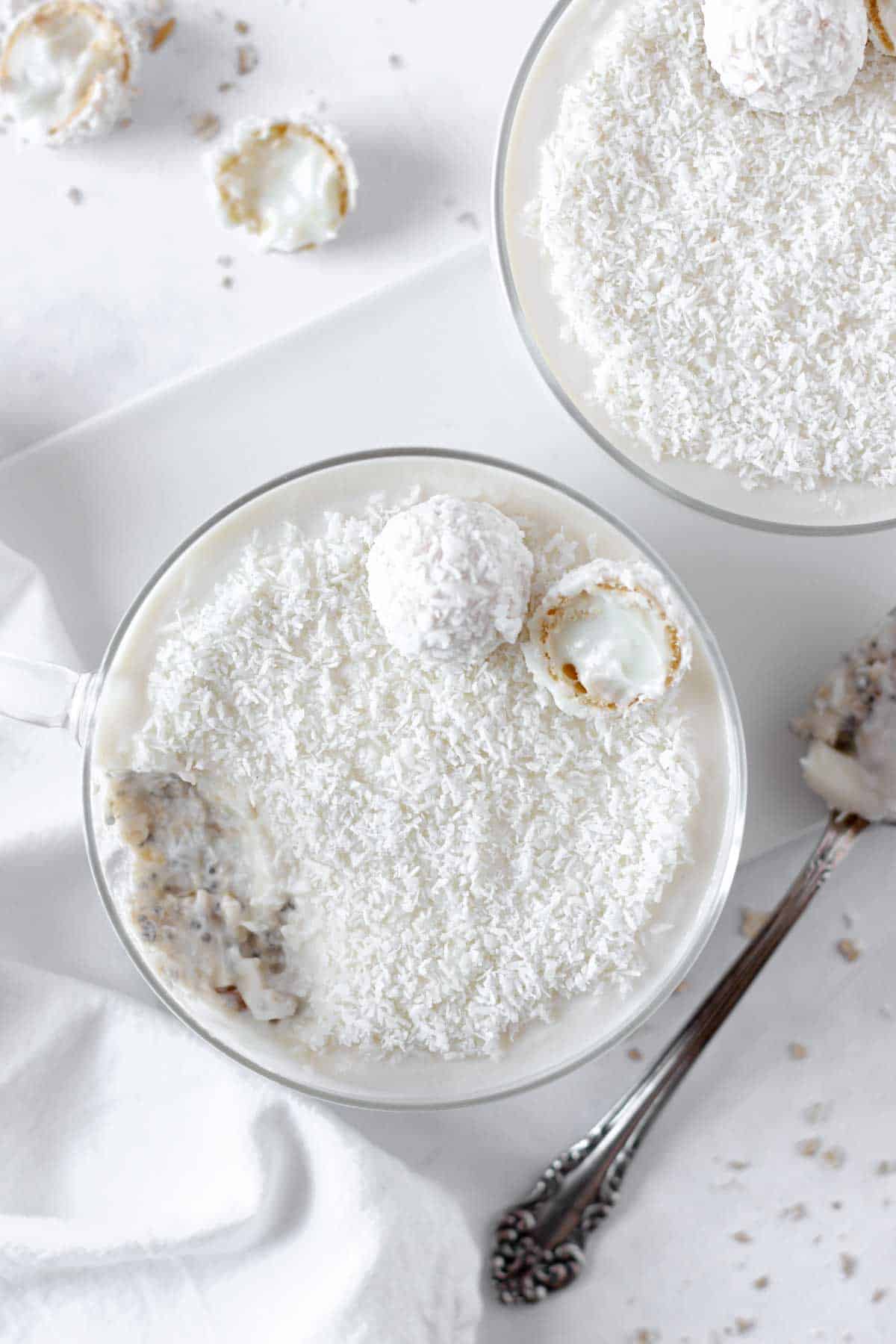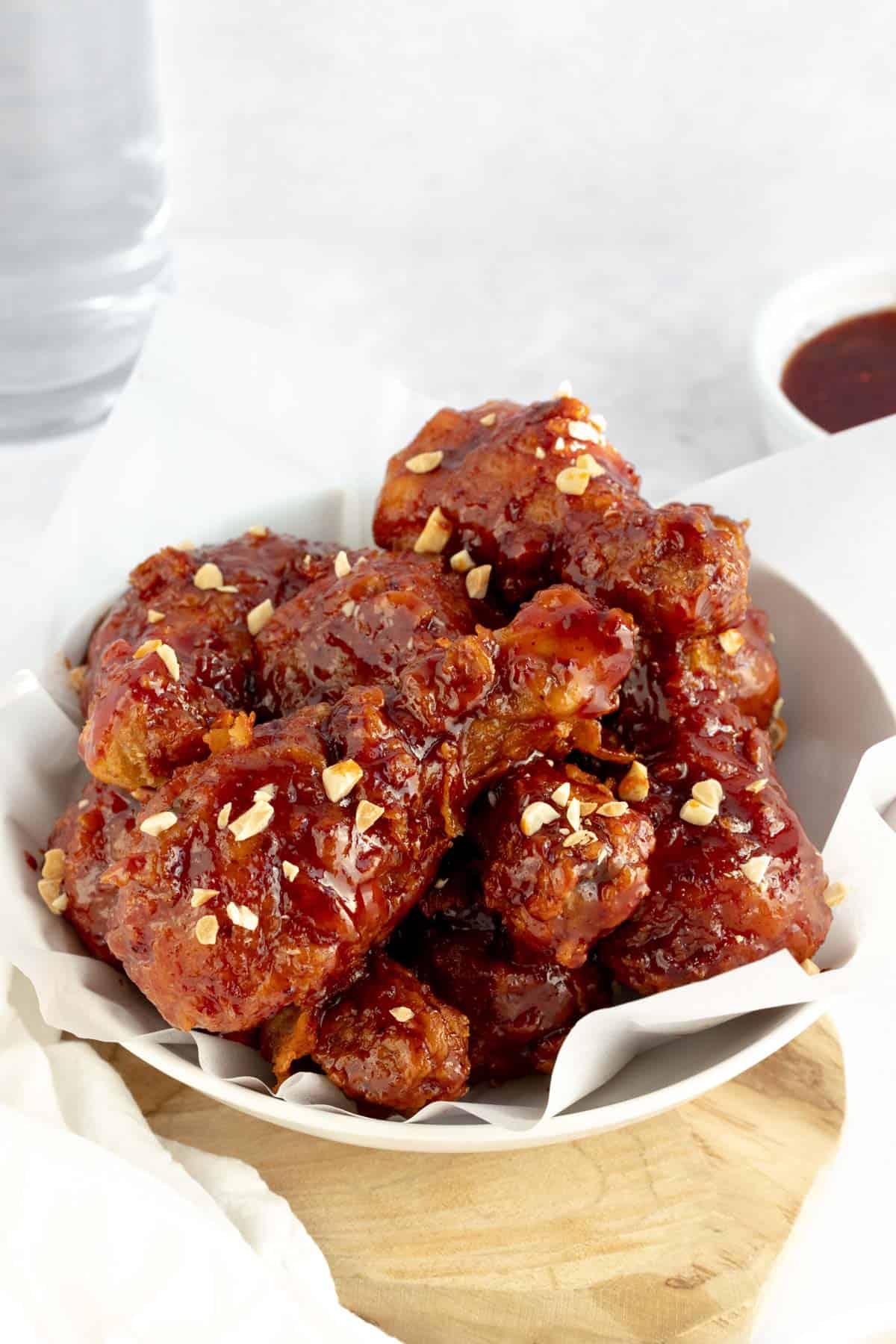Doenjang Jjigae (Korean Soybean Paste Stew)
This post may contain affiliate links. Please read my disclosure policy for details.
Doenjang jjigae is one of the most famous Korean stews! This soul-comforting soybean stew comes packed with tofu, zucchini, onion, and potatoes, delivering those deep, earthy vibes and a gentle kick of spice. If you haven’t yet, give it a taste!
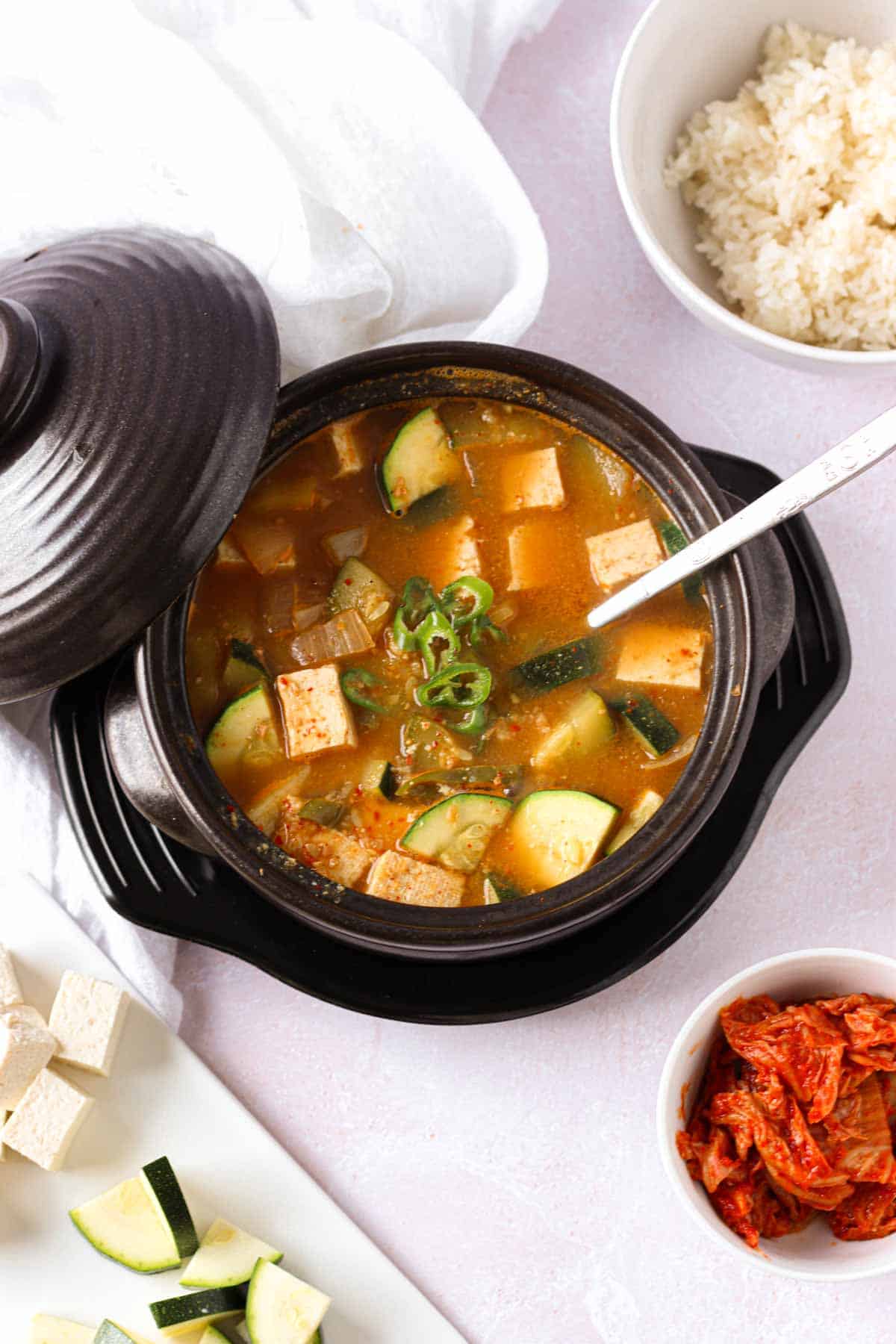
Doenjang jjigae is totally one of my comfort foods – I mean, it’s like a cozy hug in a bowl!
I can’t get enough of having it as a banchan right alongside a sizzling Korean barbecue. You won’t believe how easy making doenjang jjigae can be, but achieving that perfect balance of seasonings and cooking the veggies to perfection is what turns a regular doenjang jjigae into an insanely delicious one.
My mom is an incredible cook, and her doenjang jjigae is top-tier deliciousness, if you ask me! So after honing her recipe over and over, I’m excited to finally share my family recipe😄
What is doenjang jjigae?
Doenjang jjigae (된장찌개) is a traditional Korean stew made with doenjang, which is a fermented soybean paste.
It’s a staple in Korean cuisine and is known for its rich and savory flavor. The stew typically includes a combination of ingredients such as tofu, vegetables (like zucchini, onions, and potatoes), and sometimes some type of protein like pork or seafood.
You can enjoy it as a main dish or a side dish and serve it with steamed rice. The combination of hearty ingredients and the depth of flavor from the fermented soybean paste gives doenjang jjigae its distinctive taste.
WHY YOU’LL LOVE THIS RECIPE
Ingredients
Base
- water – I mix water and anchovy powder to create a rich anchovy broth that adds extra depth. Alternatively, you can replace it with kelp broth. And if neither is available, using plain water works just fine.
- anchovy broth powder (myeolchi powder) – anchovy broth comes in various forms. This time, I used powder (the one from Chung Jung Won) but you can also find it in tea bags to steep in water. Alternatively, you can make your own anchovy broth by soaking dried Korean anchovies (myeolchi) in water and then removing them.
- doenjang (Korean soybean paste) – the ratio of doenjang to water is crucial for making the perfect doenjang jjigae. Using too little doenjang can yield a bland taste, while an excessive amount can lead to overly salty jjigae.
- gochugaru (Korean red pepper flakes) – gochugaru contributes a spicy kick to the stew, but feel free to adjust the quantity according to your preference. However, note that a doenjang jjigae usually isn’t overly spicy.
Added ingredients
- potato – opt for a small potato, as a larger one could be excessive for the hotpot. Feel free to cut your vegetables as you prefer, but my preference is to halve the potato lengthwise and then slice it into thick pieces. Slicing them too thinly could result in quicker cooking and potential breakage.
- onion – roughly chop the onion into sizable squares or slice it.
- zucchini – similar to the potato, slice it into thick pieces. I usually cut it into quarters for smaller, spoon-friendly portions.
- garlic cloves – best is to crush the garlic using a garlic press to extract its juices for an added burst of flavor, rather than chopping it.
- firm tofu – make sure you use firm tofu rather than soft tofu. I prefer dicing it into 1 cm / 0.4 inch pieces for easy scooping, though you can also choose to cut thicker slices if you prefer.
- Cheongyang chili (Korean chili) – adding chili is optional. It brings an extra kick of spiciness. If you’re going for that fiery flavor but can’t find Korean chilies, go for small green or red chilies, which typically pack heat (unlike the milder Western large chili peppers).
Cheongyang chili, or Korean green chili, stands out with its spicier, fruity flavor compared to regular chili peppers. Its smaller, elongated shape and higher heat level add unique character to Korean dishes like stews. In comparison, regular large chili peppers you find in Western supermarkets aren’t usually too spicy.

How To Make doenjang jjigae?
- Prepare your vegetables – Cut the zucchini lengthwise, then cut it again perpendicular to create 4 long quarters. Slice the zucchini into thick pieces.
- Cut the onion into large square pieces.
- Chop the chili.
- Cut the potatoes in half lengthwise, then cut into thick slices.
Note: regardless of how you choose to cut your vegetables, aim for similar bite sizes to ensure even cooking.
- Cook the doenjang jjigae – In the stone pot, add water and anchovy broth powder. Bring it to a boil over medium-high heat.
- Add the doenjang and gochugaru. Stir on medium-high heat for a minute until the soybean paste is dissolved.
- Then add the potato, onion, and garlic.
- Bring to a boil for 5 minutes.
- Add the zucchini. Boil for 5 minutes or until all the vegetables are almost cooked.
- Add the tofu and Cheongyang chili.
- Boil for 2-3 more minutes or until the potatoes, onions, and zucchini are fully cooked.
- Serve – Serve with steamed rice.
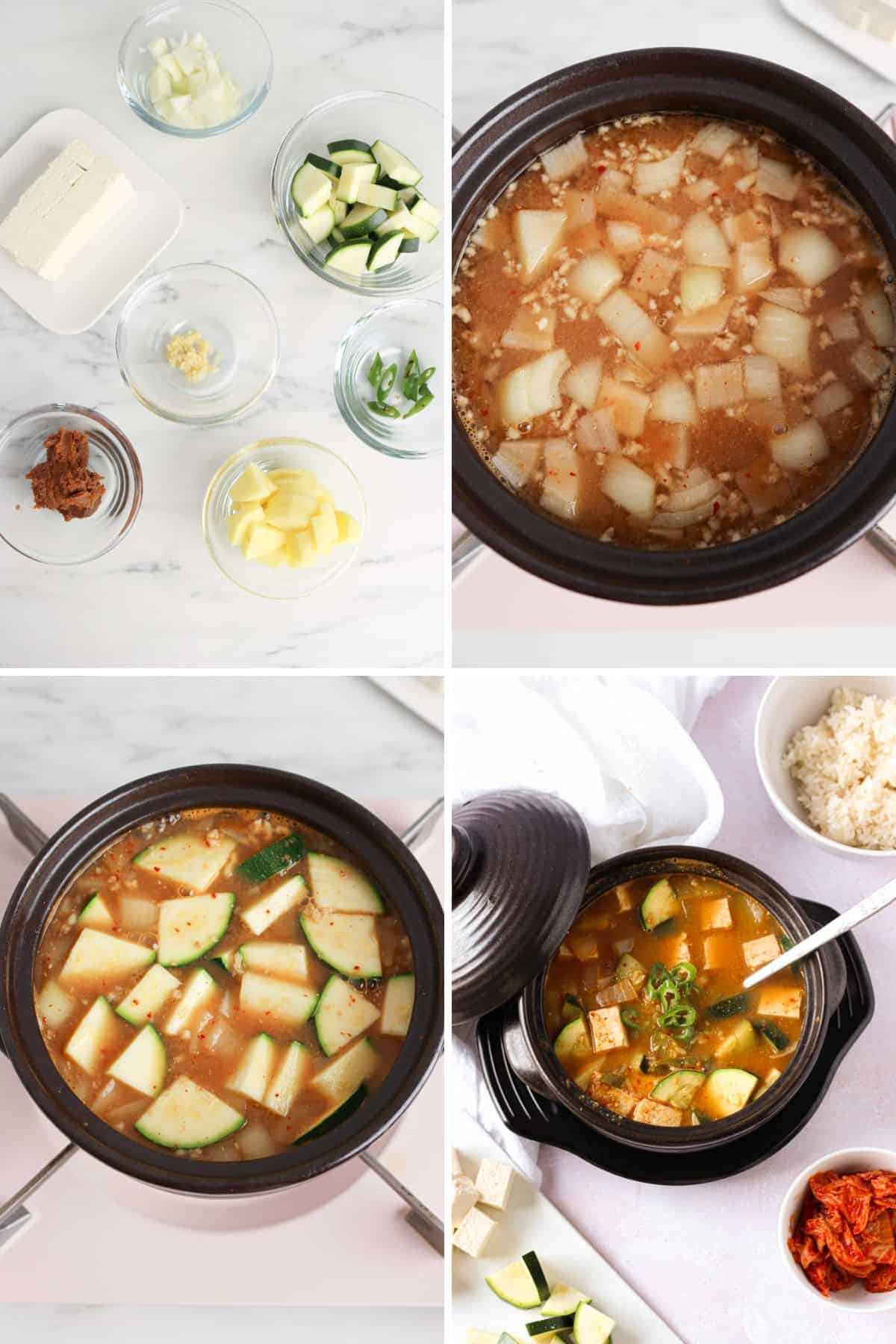
additions and substitutions
additions
- Protein – Besides tofu, you can add other protein sources like thinly sliced beef, pork, or seafood such as shrimp or clams.
- Mushrooms – Enoki mushrooms are a great addition to doenjang jjigae.
- Seafood – Enhance the seafood flavor by including shrimps, squid, or clams.
- Green onions – Some people also like adding green onions on top of regular onions.
Substitutions
- Anchovy broth – If unavailable, you can substitute with kelp broth for a different flavor base. Or just omit the stock and use water.
- Cheongyang chili – Substitute with small spicy chili.
How to serve doenjang jjigae?
Doenjang jjigae is traditionally served in a dolsot (Korean stone bowl), ideal for keeping the stew hot until it’s enjoyed. However, if you don’t have one, a regular pot works fine, and you can serve it in individual bowls.
Serve doenjang jjigae sizzling hot alongside a bowl of steamed rice, some kimchi and any other banchan you like. Personally, I enjoy spooning a bit of rice and using it to soak up the rich broth, creating a delectable blend of flavors.
Doenjang jjigae is often enjoyed as the centerpiece of a meal, accompanied by an array of banchan (side dishes) that complement its rich flavors. Or as a side dish alongside a Korean barbecue.
How To Store, freeze and Reheat?
Storing
Doenjang jjigae is typically enjoyed in one sitting but if you have leftovers, you have two options:
- If you cooked the jjigae in a stone bowl, you can simply cover it with the stone bowl lid.
- Transfer the leftover doenjang jjigae into a container with an airtight seal.
Store the leftovers in the refrigerator, and consume them within up to 3 days.
Freezing
Doenjang jjigae isn’t typically frozen since it’s often prepared in the right amount for a meal. However, if you choose to freeze it, you can do so. Be aware that the texture of the tofu and vegetables may change when reheated.
Reheating
You can reheat the doenjang jjigae in the stone bowl by bringing it to a boil on the stovetop.
Alternatively, transfer it to a microwave-safe bowl and microwave it on high for 2 to 3 minutes or until the stew is heated through.
Emma’s Tips
- Use stock as a base – If possible, make a broth using ingredients like dried anchovies or kelp. Stock adds depth of flavor to the stew.
- Proper soybean paste amount – The ratio of water to doenjang is key to achieving a flavorful doenjang jjigae. Be sure to follow the specified quantities in this recipe.
- Add ingredients at the right time – Add ingredients to the stew in the right order. Start with ingredients that take longer to cook, like potatoes, and add softer ingredients, like tofu and chili later.
- Control the spice – Adjust the spiciness by varying the amount of gochugaru and green chili. If you prefer it milder, use less, and if you like it spicier, add more.
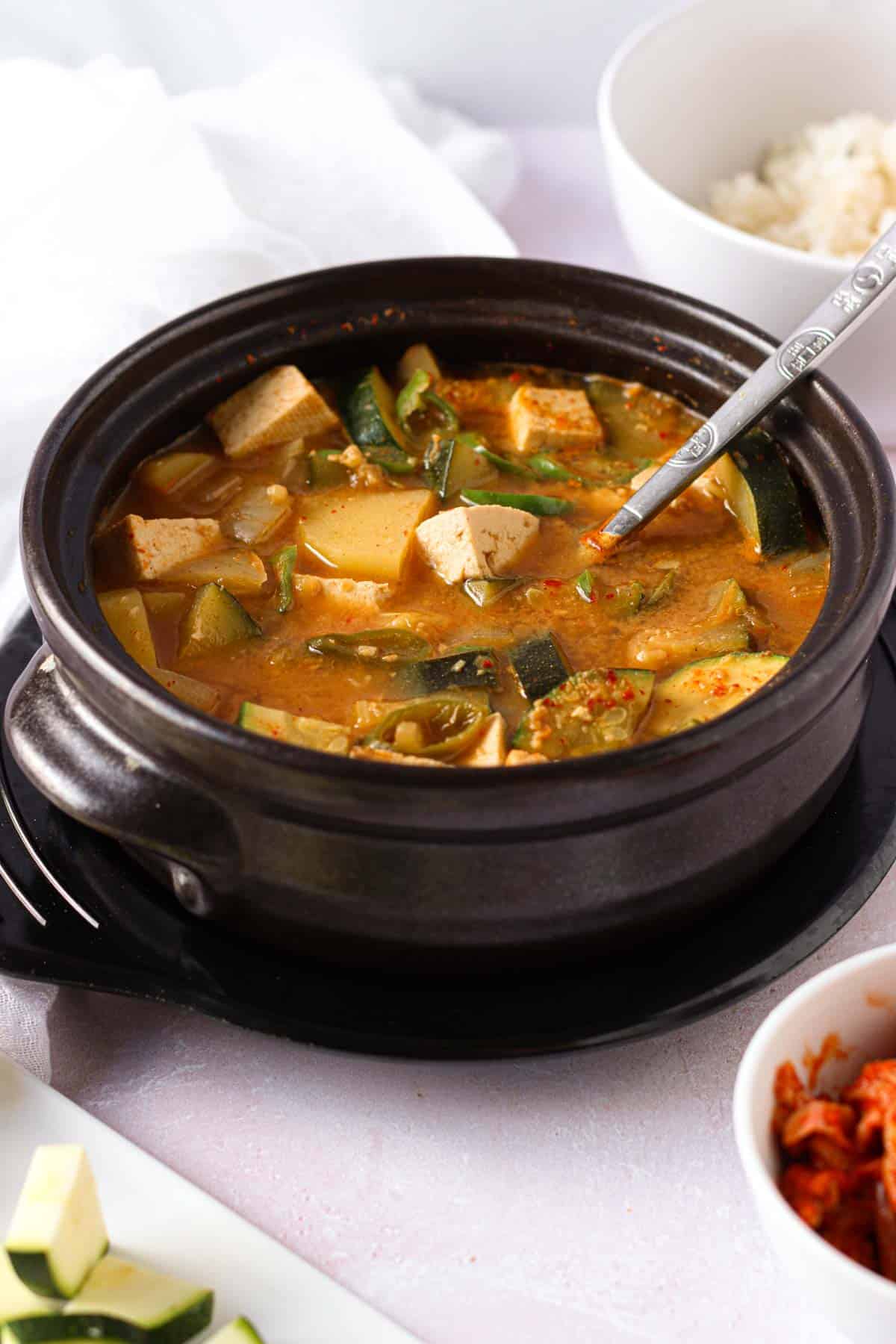
RECIPE FAQ
More Korean Restaurant-style recipes?
- Kimchi Pancakes
- Dakgalbi (Korean Spicy Chicken Stir-Fry)
- Bulgogi (Korean Marinated Beef)
- Dolsot Bibimbap
RECIPES IN YOUR INBOX? Don’t forget to subscribe to my newsletter to receive the latest recipe updates delivered for free directly to your inbox! Oh, and you will also find me on Youtube, Instagram, Facebook and TikTok. Come say hi and leave me a message, it’s always a pleasure to connect with all of you!
Thanks so much for stopping by! xx


Doenjang Jjigae (Korean Soybean Paste Stew)
Equipment
Ingredients
- 420 ml water
- ½ tbsp anchovy broth powder (myeolchi powder) | or kelp broth (Note 1)
- 3 tbsp doenjang | Korean soybean paste (Note 2)
- 1 tsp gochugaru | Korean red pepper flakes
- 1 small potato , chopped and cut into thick slices
- ½ onion , roughly chopped into large pieces or sliced (1 cm / 0.4 inch)
- ¼ zucchini , sliced and cut into thick quarters
- 2 garlic cloves , minced
- ½ firm tofu block , diced
- ½ Cheongyang chili (Korean chili) , chopped (optional) (Note 3)
Instructions
- Prepare your vegetables (Note 4) – Cut the zucchini lengthwise, then cut it again perpendicular to create 4 long quarters. Slice the zucchini into thick pieces.
- Cut the onion into large square pieces.
- Chop the chili.
- Cut the potatoes in half lengthwise, then cut into thick slices.
- Cook the doenjang jjigae – In the stone pot, add water and anchovy broth powder. Bring it to a boil over medium-high heat.
- Add the doenjang and gochugaru. Stir on medium-high heat for a minute until the soybean paste is dissolved.
- Then add the potato, onion, and garlic.
- Bring to a boil for 5 minutes.
- Add the zucchini. Boil for 5 minutes or until all the vegetables are almost cooked.
- Add the tofu and Cheongyang chili.
- Boil for 2-3 more minutes or until the potatoes, onions, and zucchini are fully cooked.
- Serve – Serve with steamed rice.

